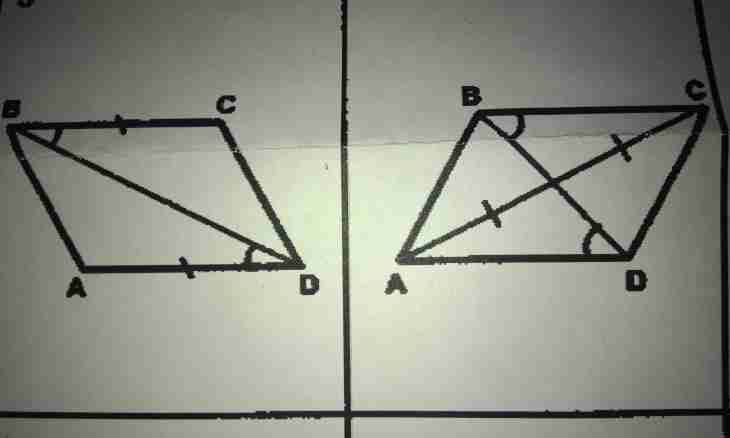The parallelogram is a quadrangle which opposite sides are parallel. The straight lines connecting it opposite corners are called diagonals. Their length depends not only on lengths of the parties of a figure, but also on sizes of corners in tops of this polygon therefore without knowledge at least of one of corners it is possible to calculate lengths of diagonals only in exceptional cases. Those are special cases of a parallelogram - a square and a rectangle.
Instruction
1. If lengths of all parties of a parallelogram are identical (a), then it is possible to call this figure also a square. Sizes of all its corners are equal 90 °, and lengths of diagonals (L) are identical and can be calculated on Pythagorean theorem for a rectangular triangle. Increase length of the party of a square by a root from the two - result and will be length of each of its diagonals: L=a * √ 2.
2. If the parallelogram is known that it is a rectangle with specified in conditions by length (a) and width (b), then and in this case lengths of diagonals (L) will be equal. And here too use Pythagorean theorem for a triangle in which a hypotenuse is diagonal, and legs - two adjacent parties of a quadrangle. Calculate required size extraction of a root from the sum squared width and heights of a rectangle: L= √ (a²+b²).
3. For all other cases of knowledge of lengths alone of the parties will be enough only for determination of the size including lengths at once of both diagonals - the sum of their squares by definition is equal to the doubled sum of squares of lengths of the parties. If in addition to lengths of two adjacent parties of a parallelogram (an and b) is known also a corner between them (γ), it will allow to calculate lengths of each piece connecting opposite corners of a figure. Find the diagonal length (L ₁) lying opposite to the known corner according to the theorem of cosines - put squares of lengths of the adjacent parties, from result take away the work of the same lengths on a cosine of the angle between them, and take a square root from the received size: L ₁ = √ (a²+b²-2*a*b*cos(γ)). For finding of length of other diagonal (L ₂) can use the property of a parallelogram given in the beginning of this step - double the sum of squares of lengths of two parties, from result take away a square of already calculated diagonal, and take a root from the received value. In a general view this formula can be written down so: L ₂ = √ (a²+b²-L ₁²) = √ (a²+b²-(a²+b²-2*a*b*cos(γ))) = √ (a²+b²-a²-b²+2*a*b*cos(γ)) = √ (2*a*b*cos(γ)).

